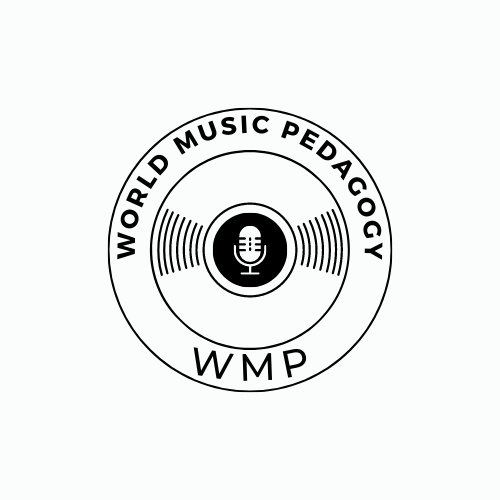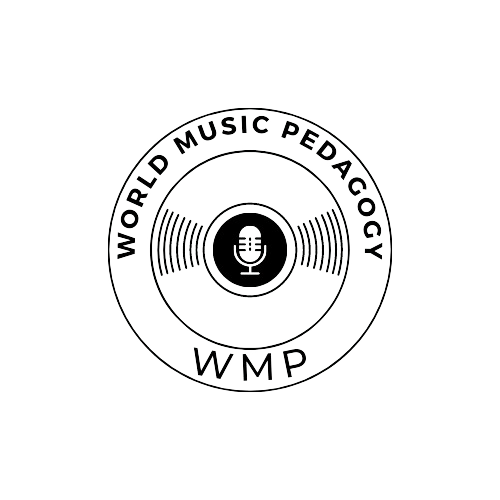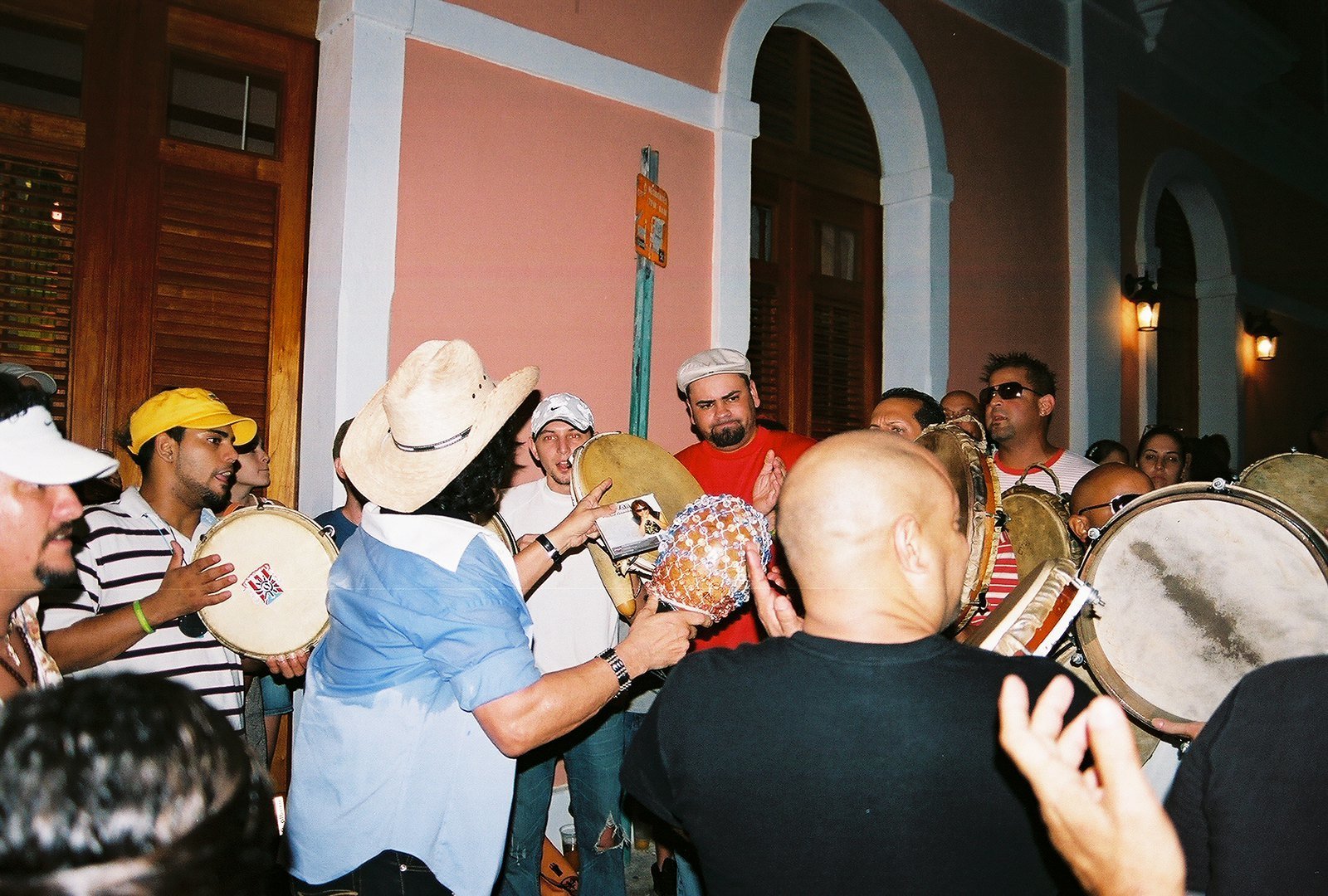
Fiesta Aquí, Fiesta Allá: Music of Puerto Rico
Lesson Hub 4
Plenazo: Music, Migration, and Puerto Rican Identity on the Move
3rd grade–5th grade

What is plena puertorriqueña?
Lesson Hub 4:
Plenazo: Music, Migration, and Puerto Rican Identity on the Move

Los Pleneros de la 21, photo by Erika Rojas. Smithsonian Folkways Recordings.
by Edwin Porras, Elizabeth K. Batiuk, and Juan Luis O'Halloran

25+ MIN
30+ MIN
25+ MIN
Lesson Hub 4: Plenazo: Music, Migration, and Puerto Rican Identity on the Move

MUSIC LISTENING
MUSIC MAKING
HISTORY & CULTURE
What is Plena?
Path 1

25+ minutes
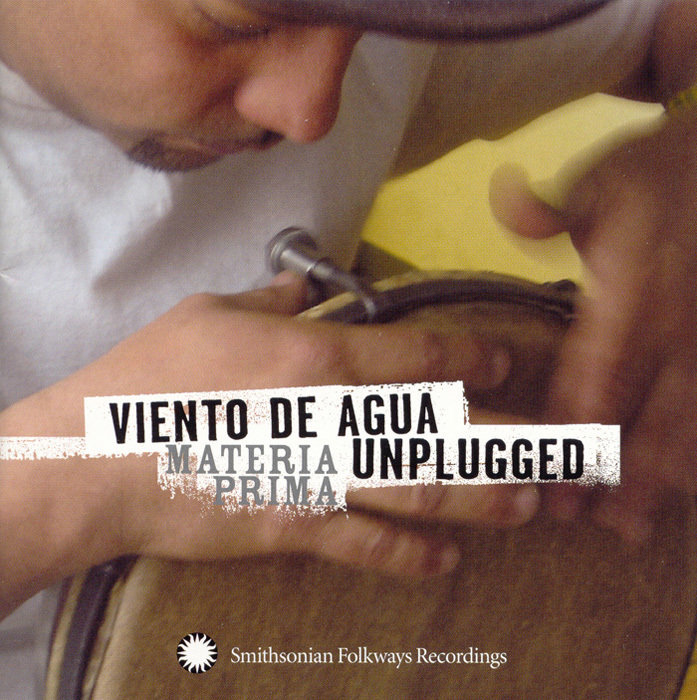
Viento de Agua Unplugged: Materia Prima, cover design and photo by Marlow Palleja. Smithsonian Folkways Recordings.


Attentive Listening
"Ahora Sí," performed by Viento de Agua

Listen to "Ahora Sí" (Right Now).
What is this music used for?
What musical instruments do you hear?
How is this similar to or different from other types of music you know?



Plena!
The music you just heard is called plena.
It originated in Puerto Rico.


Tito Matos: Puerto Rican Plena Drummer, photo by Dan Sheehy. Smithsonian Folkways Recordings.

Where is Puerto Rico?


The Caribbean (Political), by U.S. Central Intelligence Agency. University of Texas Libraries.
Puerto Rico is an island in the Caribbean Sea. It is located approximately 1000 miles from Miami, FL.

- was originally practiced by people from the island's working classes ... providing a way for them to tell their own stories.

Plena:

- is percussion-driven music.
- has West African, European, and Indigenous roots.

Plena: A Little History

Freight Train Used in Hauling Cane to the Sugar Mills from Loading Stations, by Jack Delano. Library of Congress.
During the early 20th century (1900s), US companies monopolized Puerto Rico’s sugarcane production.
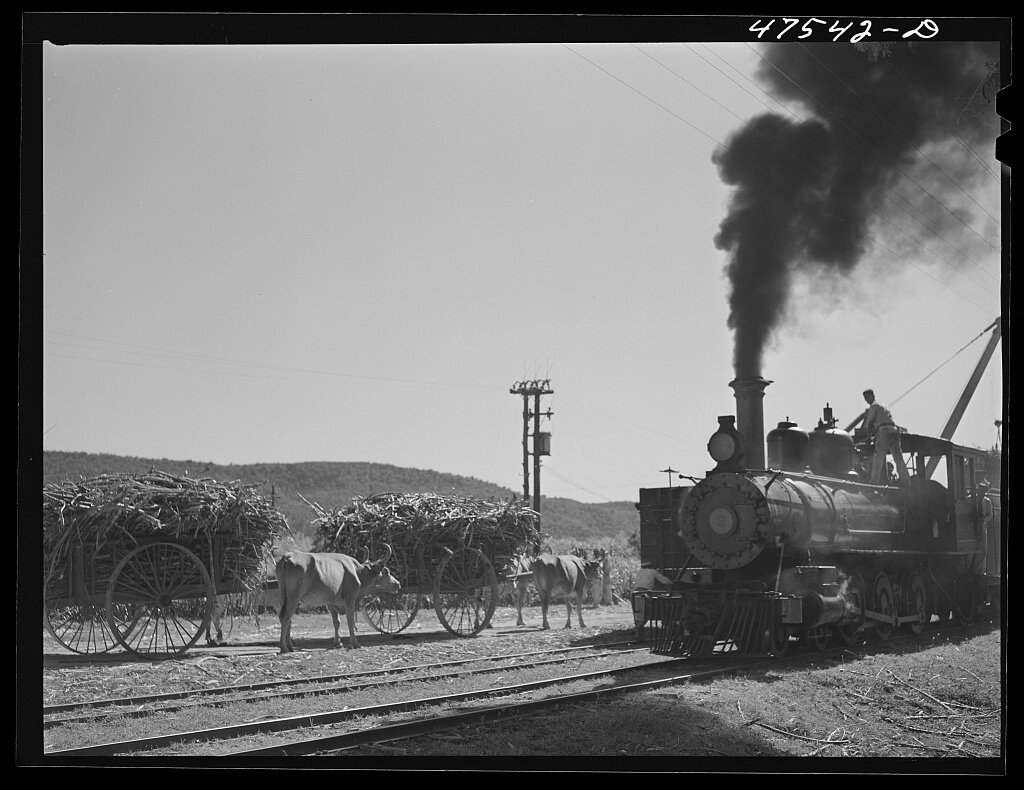
Many people were forced into the industrial life of sugar mill labor, earning very low wages.
Large sugarcane production brought rapid industrialization to Puerto Rico (e.g., trains, railroads, machinery).

Plena: A Little Geography

Puerto Rico (Small Map), by U.S. Central Intelligence Agency. University of Texas Libraries.
Many of Puerto Ricos’s working-class neighborhoods were located in coastal areas ... this is where plena music was "born"!


Plena: A Little More History

Central Guánica in Ensenada Puerto Rico, unknown artist, {PD-Art|PD-old-70}, via WikimediaCommons.
This music started to become a "voice" for working-class people during the early 20th century.
Many early plenas talked about the struggles these people faced.


Some plenas critiqued the US ruling class (business owners and other powerful people).
"El Nuevo Gobernador" (The New Governor)

T. Roosevelt Jr., by Bain News Service. Library of Congress.


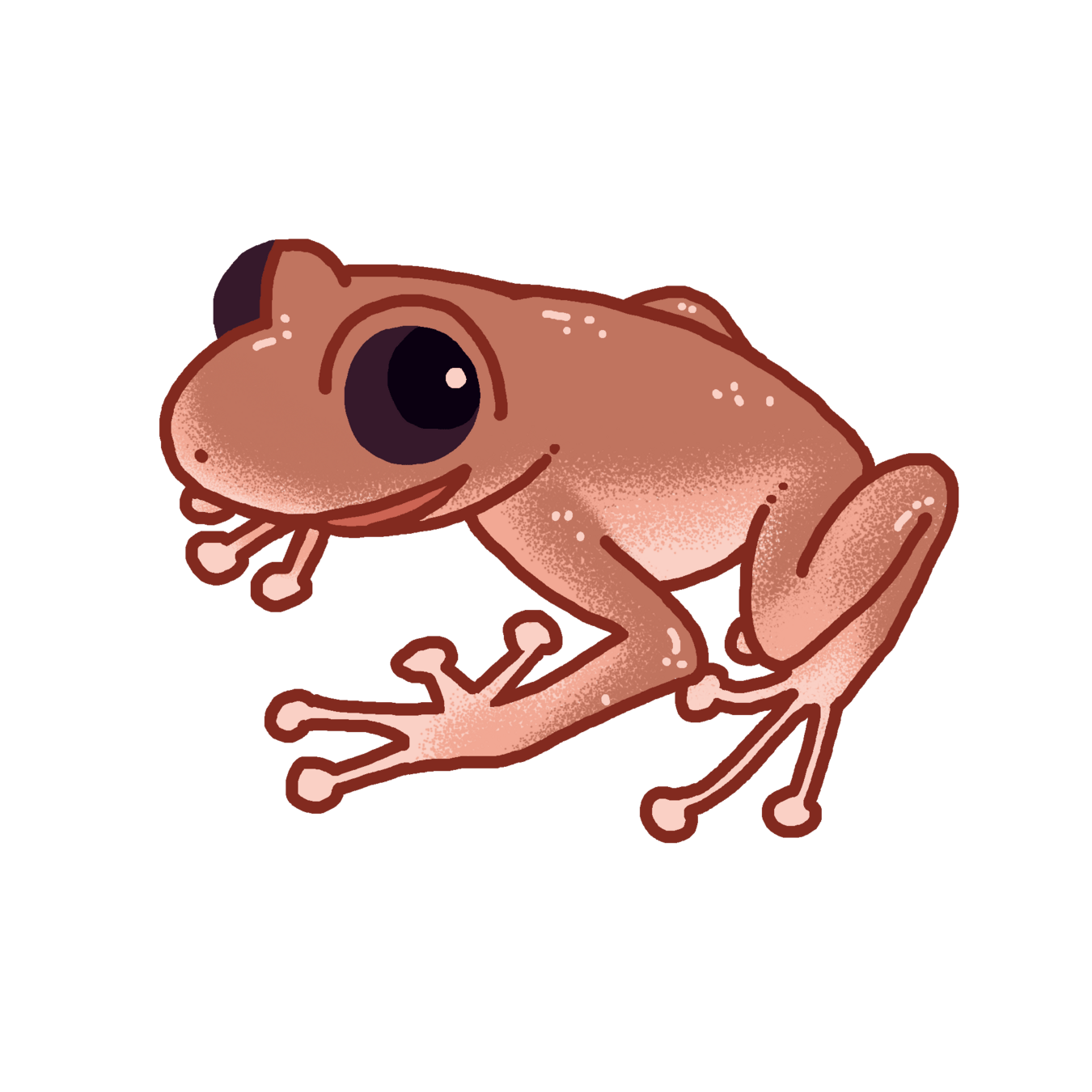
This plena, recorded in 1929, criticizes the arrival of the new governor of Puerto Rico - Theodore "Ted" Roosevelt Jr. - the son of US president Theodore (Teddy) Roosevelt.
The lyrics warn Puerto Rican politicians ("leones," En., the lions) about the arrival of Roosevelt ("cazador," En., the hunter).
"El Nuevo Gobernador" by Los Reyes de la Plena
“Tintorera del Mar” (Female Shark of the Sea)

La Plena, directed by Amílcar Tirado. Archivo General de Puerto Rico.
Watch and listen to another example of an early plena - tells the story of a US lawyer for a powerful sugarcane company who was bitten by a shark while swimming in the ocean by San Juan!



Originally, plena was critiqued and looked down upon by some. Some urban composers called it “unrefined” and “uninteresting.”
Over time, however, plena became very popular among all social classes in Puerto Rico.

But ... not everyone liked plena.



Plena: A Little More Geography
As you have learned, Puerto Rico is located in a region known as the Caribbean.
Like many music traditions in this part of the world, plena includes the contributions of immigrants of different backgrounds, who lived among locals.

Plena: Cultural Influences

Like other music traditions in the Caribbean region, such as Cuban conga, Trinidadian calypso, and Dominican merengue, plena incorporates European, Indigenous, and West African elements.


Advance to the next slide to learn more.


The Caribbean (Political), by U.S. Central Intelligence Agency. University of Texas Libraries.
Can you locate Cuba, the Dominican Republic, and Trinidad in relation to Puerto Rico?
Geography Connections

Listening for Cultural Influences

What elements do you think might be Indigenous, West African, and/or European?
Let's return to the first plena we heard in this Path, "Ahora Si".

"Ahora Sí," performed by Viento de Agua
Listening for Instruments

Early plena music had flexible instrumentation, but almost always included percussion instruments, like pandero and güiro.
Can you hear these instruments in this recording?
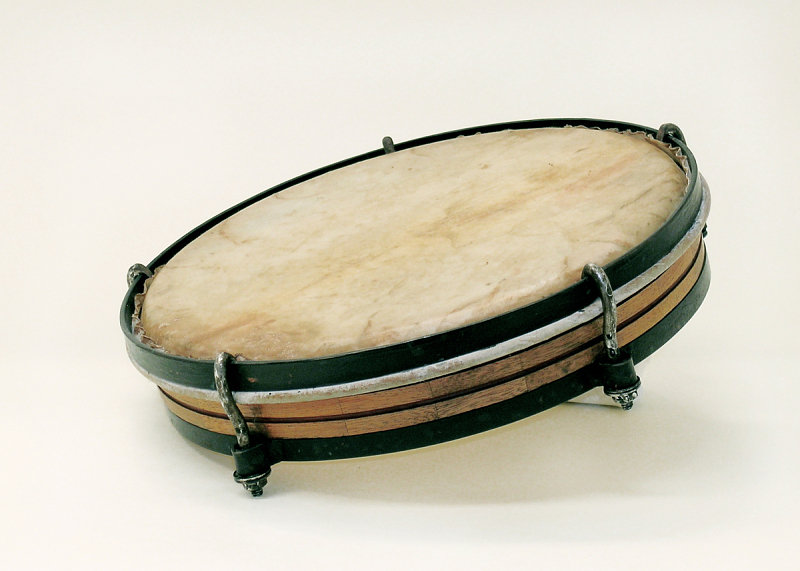
Pandero (Seguidor), unknown maker. National Museum of American History.
Puerto Rican Güiro, unknown maker. National Museum of American History.


"Ahora Sí," performed by Viento de Agua

The Role of the Pandero

Listen to Tito Matos talk about the important role of pandero in plena.
Los Pleneros de la 21 Demonstrate Drums Used in Plena Music. Smithsonian Folkways Recordings.

About Panderos

Panderos come in three different-sizes:
-
seguidor (largest and lowest in sound)
-
segundo or punteador (middle size)
-
requinto (smallest and highest in sound)
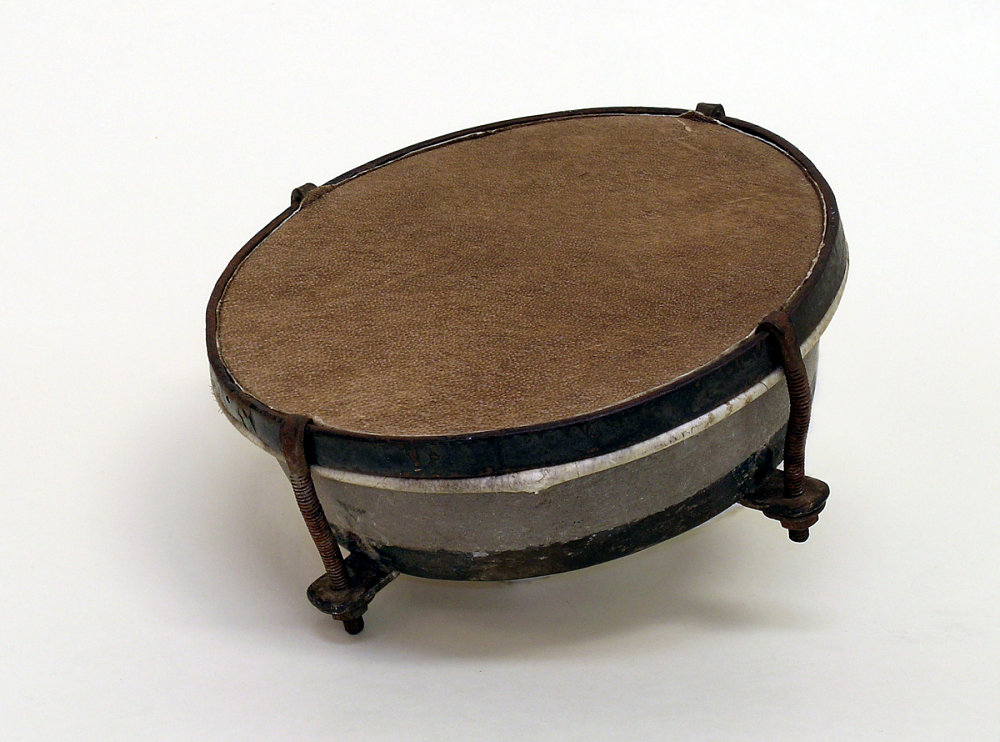

Pandero (Requinto), unknown maker. National Museum of American History.
Panderos are frame drums derived from Spanish and Arabic cultures.
The player produces an open tone by hitting and bouncing off the thumb against the edge of the skin and a closed tone by slapping the hand flat on the center of the skin.
Pandero (Seguidor), unknown maker. National Museum of American History.

Pandero Interactive Tour!

Pandero Interactive Tour. National Museum of American History.

Listening for Musical Characteristics

Plena music:
- uses simple harmonies.
- is usually set to binary form (verse/chorus).
- The lead singer begins and is echoed by a group of singers in call-and-response.
- incorporates improvisation.
Do you hear these elements in the song "Ahora Si," by Viento de Agua?

Plena Today

Today, plena is popular in Puerto Rico AND throughout its diaspora.

FolkLIVE Concerts En Pura Plena: Celebrating the Life and Loves of Tito Matos. Smithsonian Folklife Festival.
- It continues to be played in Puerto Rican neighborhoods, but is also performed in many other places, like the US mainland.
- It is also recorded in professional studios and distributed across the world.

Learning Checkpoint
- Why is plena considered "working-class" music?
- What are some instruments used in plena?
- What Indigenous, West African, and European influences can be heard in plena music?

End of Path 1: Where will you go next?




Advance to the next Music Listening Path:
Nueva Canción: Musical Characteristics
Music of Puerto Rico - Lesson 5, Path 2
Path 2

30+ minutes
People and Plena on the Move

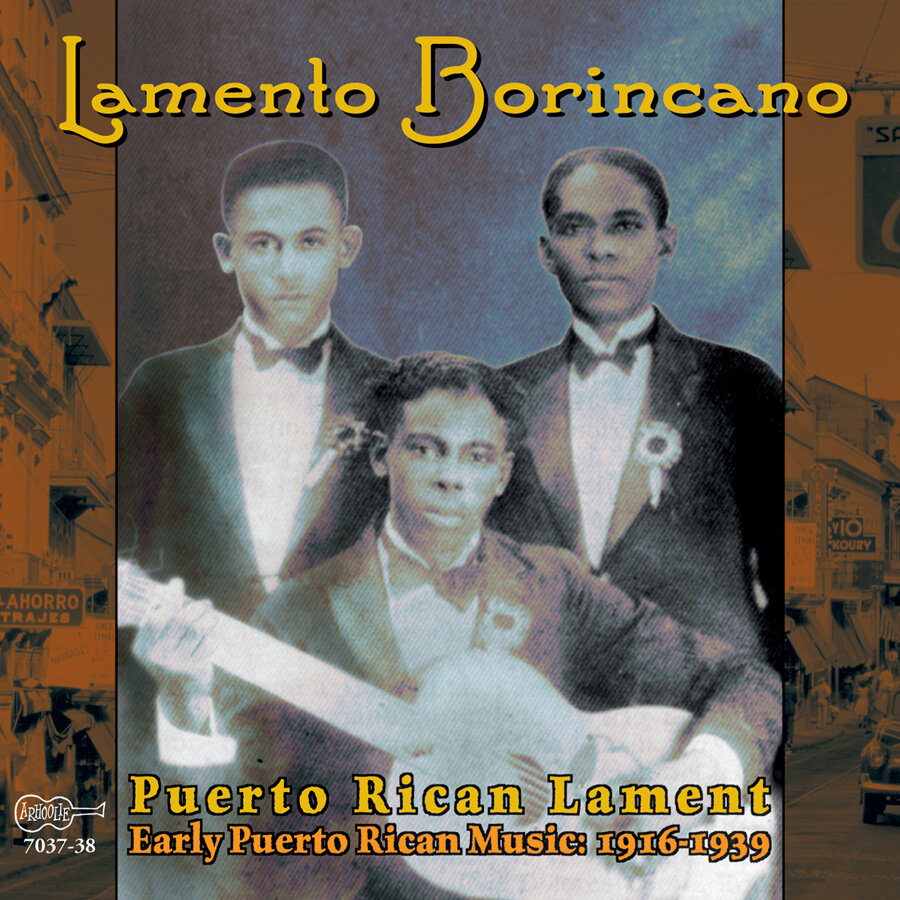
Lamento Borincano, cover art by Morgan Dodge. Arhoolie Records.
A Quick Review: Puerto Rican Plena

In Path 1 we learned that plena is a percussion-driven musical practice from Puerto Rico.
Plena became a "voice" for the working class ... it was a way for common people to tell their own stories.
It originated in coastal communities in the early 1900s.
During this time, the local people and immigrants blended their musical perspectives and plena emerged!


Where is Puerto Rico?


The Caribbean (Political), by U.S. Central Intelligence Agency. University of Texas Libraries.
Puerto Rico is an island in the Caribbean Sea. It is located approximately 1000 miles from Miami, FL.


People and Plena on the Move!
In Path 2, you will perform plena rhythms and learn how and why this music has gained widespread popularity outside of Puerto Rico.



Plena: Engaged Listening
"Ahora Sí," performed by Viento de Agua

Listen to this example of plena music.

Clap or step the steady beat.
Pat or tap the subdivisions.
Perform different rhythm patterns.

Integrating Context: Puerto Ricans on the Move

When people move from place to place, they take many aspects of their culture (e.g., music traditions, like plena) with them!
They became part of the Puerto Rican diaspora.
At the turn of the 20th century, many Puerto Ricans began to migrate to cities in the United States, such as New York City, looking for better job opportunities.

Integrating Context: Plena in the Diaspora

In the 1920s, Puerto Ricans in New York began making professional plena recordings.
For the first time, plena music became commercialized.

Do you think this changed plena?
In what ways?


Attentive Listening: "Qué Vivío" (What a Living)
Listen to this early studio recording of plena (New York City in 1936):


What do you notice about instruments and style?
"Ahora Sí," performed by Viento de Agua
"Qué Vivío," performed by Canario y Su Grupo

Integrating Context: The Versatility of Plena

But - it could also be performed more formally, by professional dance orchestras with added instruments.

Some changes that occurred in diasporic communities made plena more versatile.
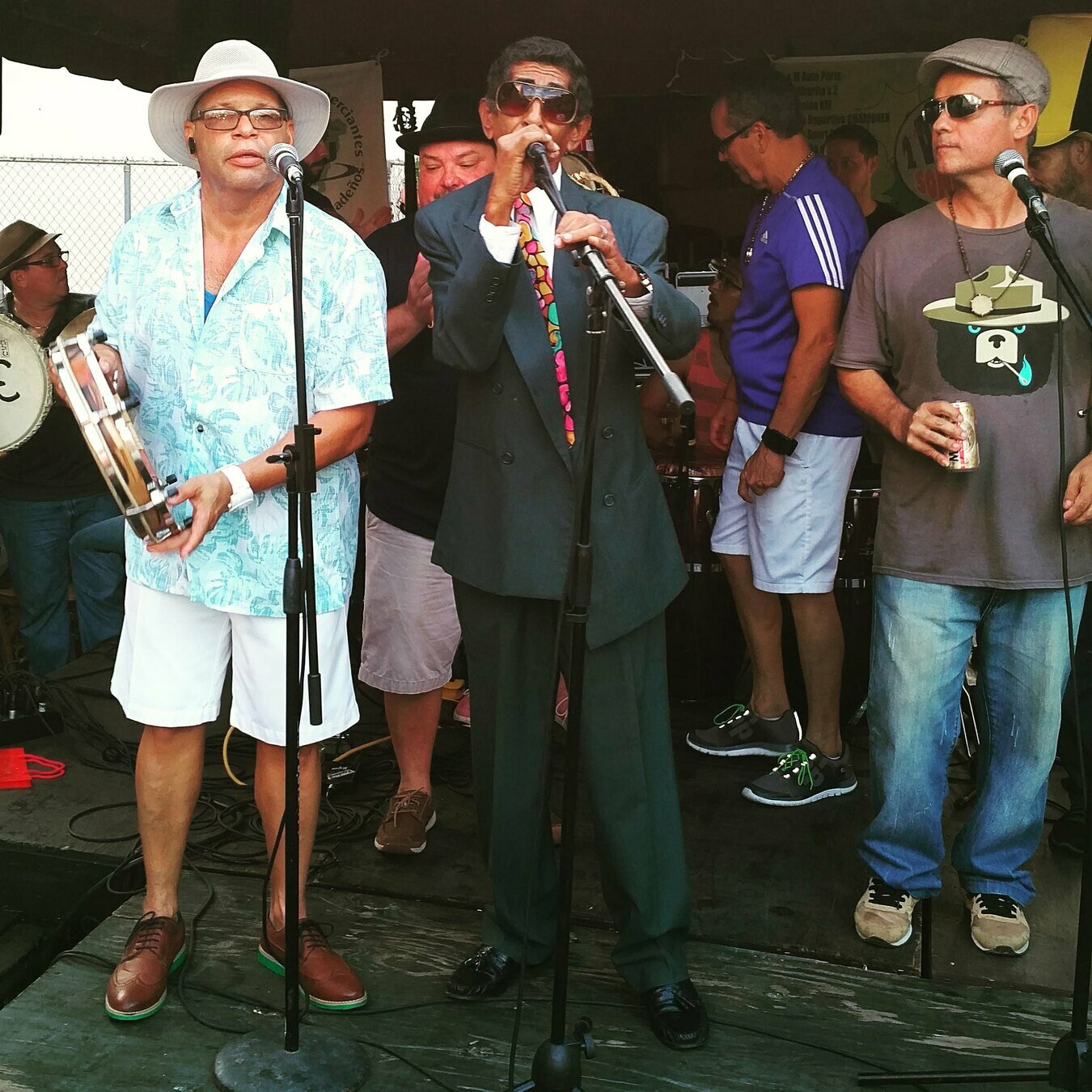
Above: Exito! Celebrando 2016 - Salsa & Heritage Festival!, by Laura Holtz. Puerto Rican Cultural Center. Left: Portrait of Machito, Graciella Grillo, and Mario Bouza, Glen Island Casino, by William P. Gottlieb. Library of Congress.

It could still be performed by community musicians at informal gatherings or cultural festivals.
Plena in the Puerto Rican Diaspora: Los Pleneros de la 21!

For the rest of this Path, we will focus on one of the most important professional plena groups in the world: Los Pleneros de la 21, established in the Bronx, New York in 1983.
They take their name from La 21, a bus stop in Santurce - a neighborhood in San Juan (the capital of Puerto Rico).
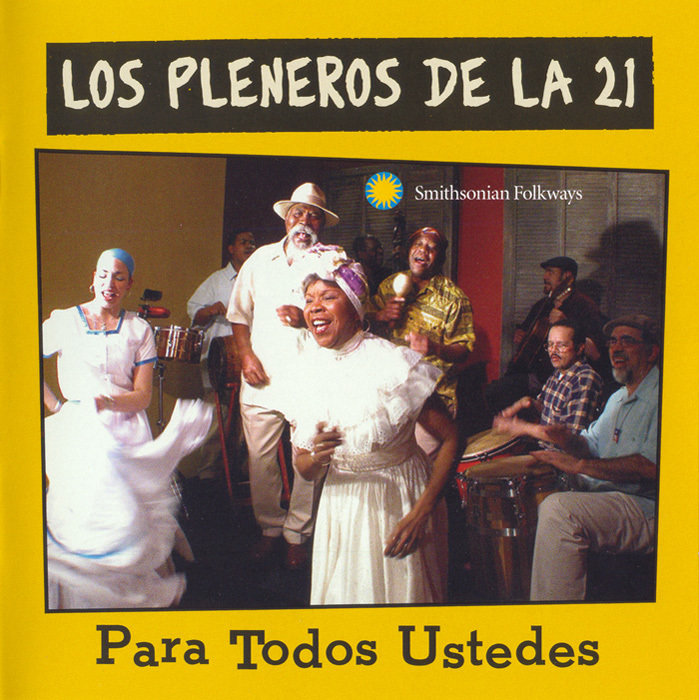
Para Todos Ustedes, cover art by MP Designs. Smithsonian Folkways Recordings.


Attentive Listening with Los Pleneros de la 21

"Patria Borinqueña":
- Where and when do you think it was recorded?
- What do you think it is about?
- What instruments do they use?
- Is there anything unique or different about this recording?

Los Pleneros de la 21, photo by Erika Rojas. Smithsonian Folkways Recordings.
Based on what you hear and what you have learned so far:

Optional Attentive Listening: Structural Elements

- Introduction: non-metrical; slow and soulful; voices, piano, and cuatro
- Call and Response: Lead singer alternates with chorus
- Bridge: instrumental with key change
- Ending: call-and-response (shorter phrases)

Listen to the whole recording of “Patria Borinqueña”
Identify the following structural elements (sections).
Attentive Listening: Instrumentation



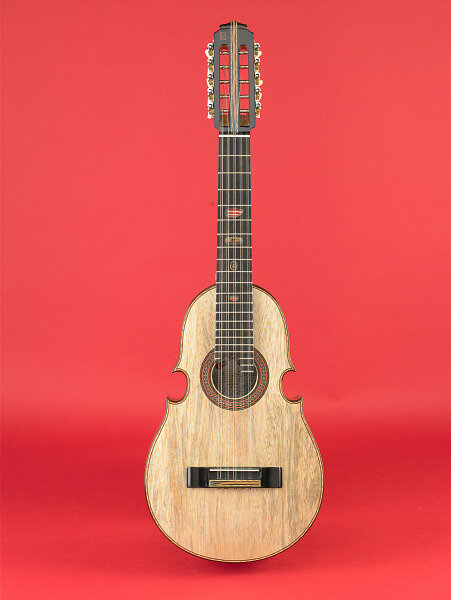
Also listen for the piano!
Puerto Rican Güiro, unknown maker. National Museum of American History.
Pandero (Seguidor), unknown maker. National Museum of American History.
Avilés Vázquez Cuatro, by Avilés Vásquez. National Museum of American History.

About Panderos

Panderos come in three different-sizes:
-
seguidor (largest and lowest in sound)
-
segundo or punteador (middle size)
-
requinto (smallest and highest in sound)


Pandero (Requinto), unknown maker. National Museum of American History.
Panderos are frame drums derived from Spanish and Arabic cultures.
The player produces an open tone by hitting and bouncing off the thumb against the edge of the skin and a closed tone by slapping the hand flat on the center of the skin.
Pandero (Seguidor), unknown maker. National Museum of American History.

Pandero Interactive Tour!

Pandero Interactive Tour. National Museum of American History.

Engaged Listening with Los Pleneros de la 21

"Patria Borinqueña":
- Move to the music.
- Improvise a response
- Echo a rhythm.
- Count the phrases
- Clap the beat.

Los Pleneros de la 21, photo by Erika Rojas. Smithsonian Folkways Recordings.
Engage with the recording in a variety of ways:

Engaged Listening: Sing Along with the Chorus


Listen again.
This time, sing along with the chorus.
“Patria borinqueña, jardines de rosas” “Land of Puerto Rico, garden of flowers”
“Déjame cantarte, borinquen hermosa” “Let me sing to you, beautiful Puerto Rico”
*** Start the recording at 0:52 for this activity.
Engaged Listening: Add a Rhythm

You may use any percussion instruments . . .
Basic Plena Rhythm, notation by and used with permission of Edwin E. Porras.


Add some rhythm as you listen!
*** Start the recording at 0:52 for this activity.
Engaged Listening: Put It All Together


- Play or move to the steady beat.
- Play the rhythms shown on the slide.
- Improvise a rhythm.
- "Pass" the rhythm.
- Sing the chorus.
“Patria Borinqueña, jardines de rosas”
“Déjame cantarte, Borinquen hermosa”
How will you participate?


Enactive Listening: Put It All Together


- Keep the steady beat.
- Sing the melody.
- Play a repeated rhythm pattern (ostinato).
- Improvise.
“Patria borinqueña, jardines de rosas”
“Déjame cantarte, borinquen hermosa”
Perform the chorus section of "Patria Borinqueña" without the recording.

How will you participate?



Using the melody for and rhythm of "Patria Borinqueña," write your own chorus!
Can you speak it in rhythm? Can you sing it in rhythm?
Creating: Write Your Own Plena Chorus
- Practice humming the melody.
- Clap and count the syllables (six).
- Write two phrases: eight beats each in length.
- Write in the language of your choice.
- Choose any theme/topic.


Consider these suggestions:
- Share the choruses you composed.
- Vote for the chorus you will use in the class plena.
- Choose your role in the ensemble.
- Practice the chorus (instrumental parts / singing).
- Add verses or improvisation sections.
- Revise and refine your performance.
- Present your performance for an audience.

Optional Extension: Create and Perform a Class Plena!


Plena at the Smithsonian Folklife Festival, top photo by Stephen Kolb, bottom photo by Josh Weilepp. Center for Folklife and Cultural Heritage.

Learning Checkpoint
-
Where and when did plena as a form of professional and commercial music emerge?
-
What types of changes did musicians make when plena started to be performed outside of Puerto Rico (the diaspora)?
-
What were the challenging and rewarding parts of writing and performing your own plena chorus?

End of Path 2: Where will you go next?



Plena: Culture and Identity
Path 3

25+ minutes

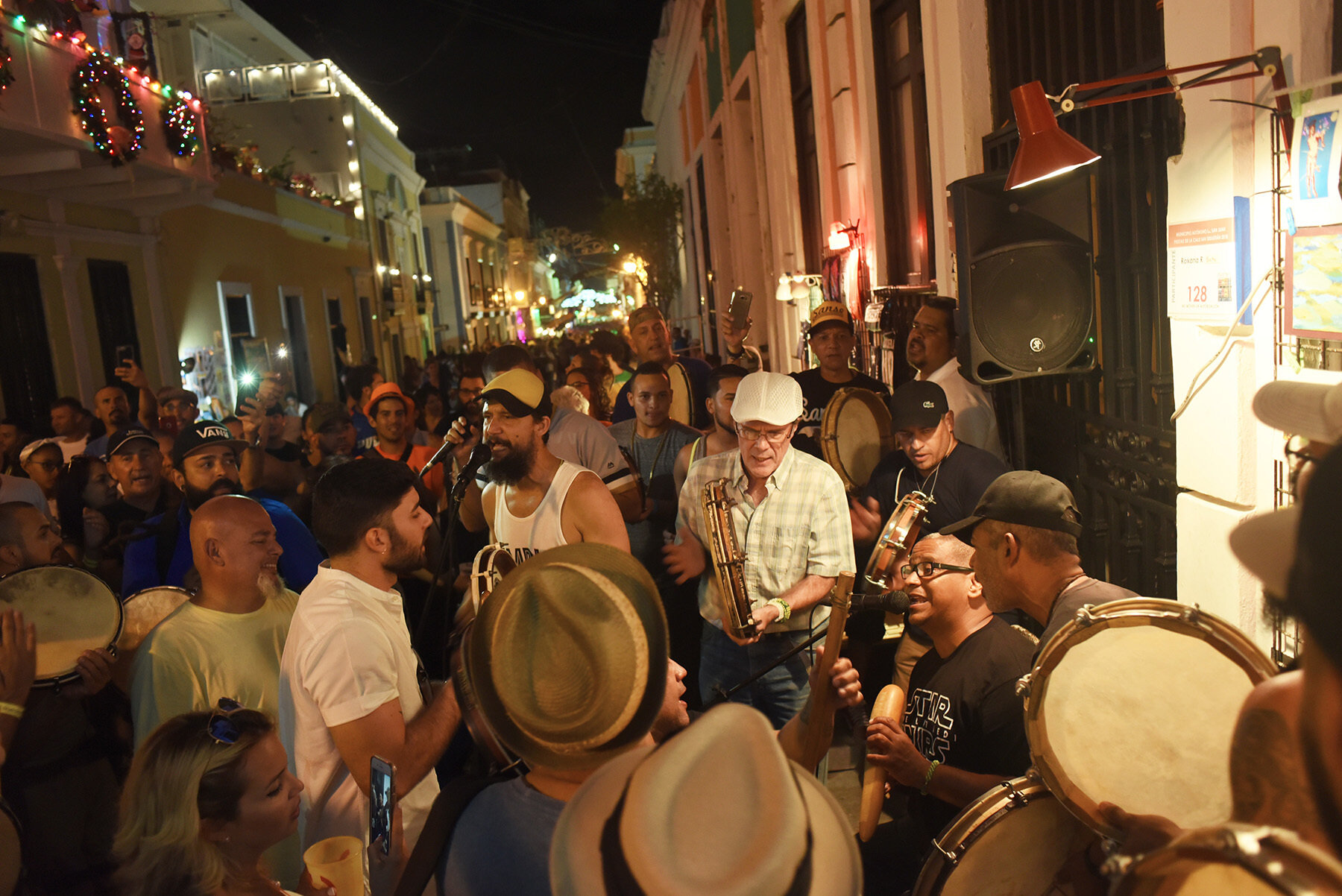
Pleneros in the Street at Fiesta de la Calle San Sebastian 2018, photo courtesy of Ricardo Alcaraz.
A Quick Review: Puerto Rican Plena

In Path 1 we learned that plena is a percussion-driven musical practice from Puerto Rico that originated in coastal, working class communities in the early 1900s.
In Path 2, we learned that the first commericalized recordings of plena music were made by Puerto Ricans living in New York City in the 1920s.
These professional recordings, which often incorporated additional instruments, helped plena music gain popularity all over the world!


Where is Puerto Rico?


The Caribbean (Political), by U.S. Central Intelligence Agency. University of Texas Libraries.
Puerto Rico is an island in the Caribbean Sea. It is located approximately 1000 miles from Miami, FL.


Plena Culture and Identity
In Path 3, we will explore how plena music has contributed to a unique cultural identity, shared by Puerto Ricans living on the island and all over the world!


The Sounds of Plena

Plena music has European, West African, and Indigenous influences.
Why?

Pandero (Seguidor), unknown maker. National Museum of American History.
Puerto Rican Güiro, unknown maker. National Museum of American History.


"Ahora Sí," performed by Viento de Agua

These influences can be heard in the musical sounds ... especially instrumentation.

Early on, plena was looked down upon in certain social circles. It was sometimes called “unrefined” and “uninteresting.”
Early Plena: Music of the Working Class

As time went on, it became popular among all social classes in Puerto Rico.
Nowadays, plena is an important symbol of culture and identity for Puerto Ricans all over the world!
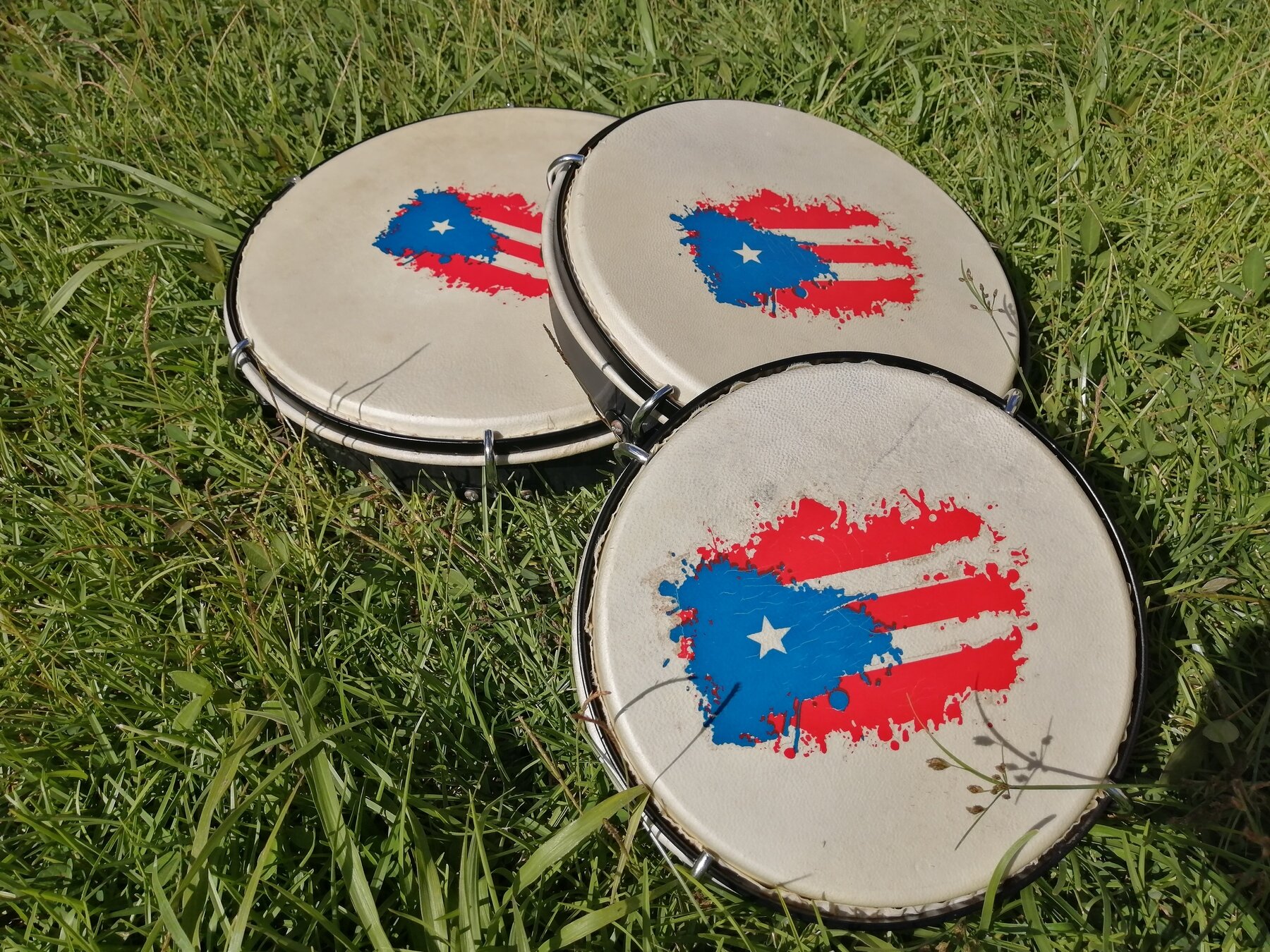
Pandero with Puerto Rican Flag, by Juan O'Halloran. Smithsonian Folkways Recordings.
What is Culture? What is Identity?

Culture
You can think of culture as a collection of beliefs, values, and behaviors that a group of people share and want to pass on to future generations.
Cultural Identity
Identity
Everyone has personal and collective (group) identities.
Cultural identity is your sense of belonging to a cultural group.

Your identity can evolve and change over time.
You can have more than one cultural identity.
Your cultural identities can affect your personal identity.
You can think of identity as who you are and how you fit into the world.

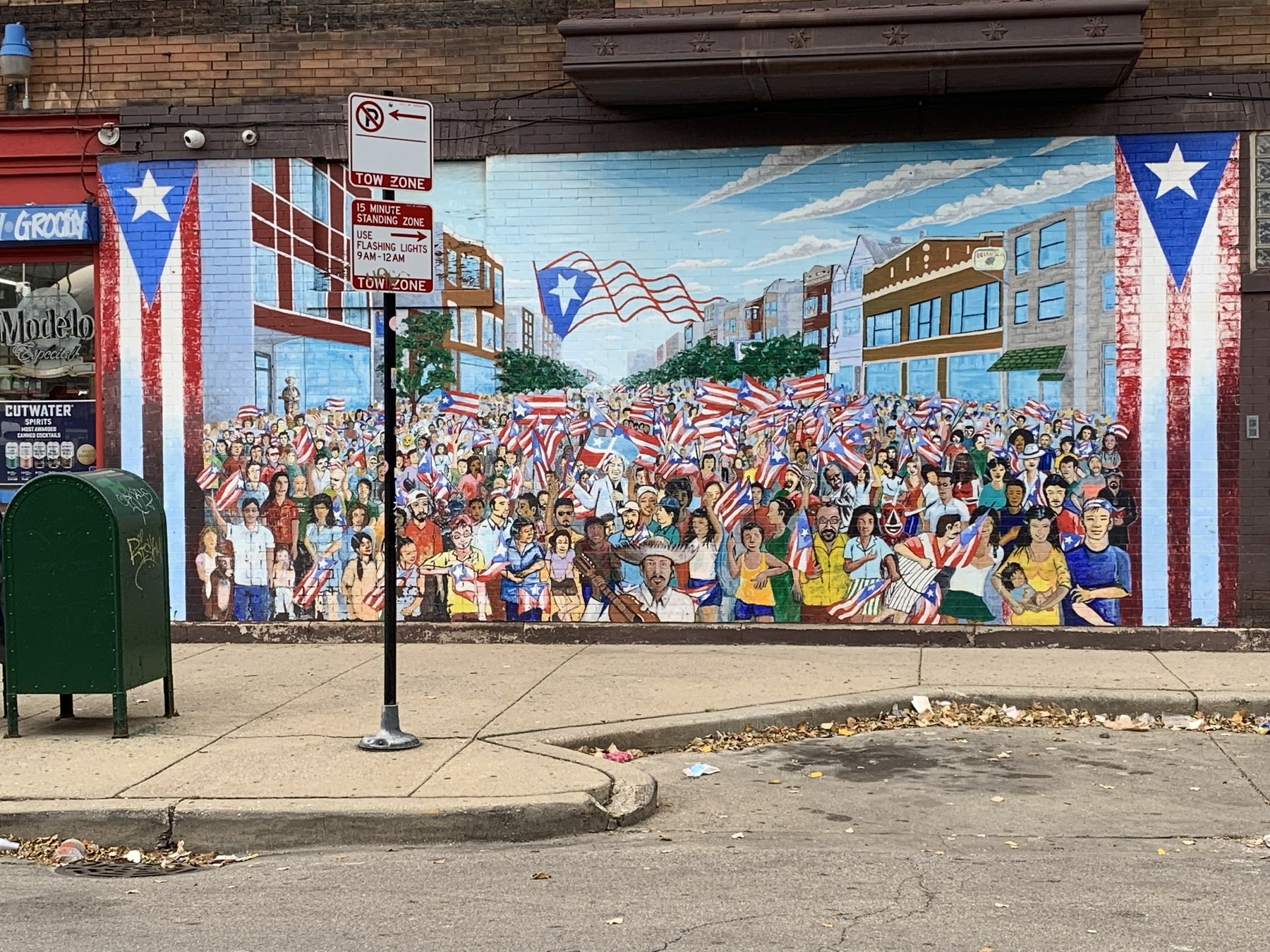
Visual Arts Integration: Puerto Rican Culture
Sea of Flags (Street View), mural by Gamaliel Ramirez, photo by Jason Morris. Smithsonian Folkways Recordings.
Plena music has been (and is) a powerful way for people to express their Puerto Rican cultural identity, both on the island and in the diaspora.
Let's take a look at some examples.

Plena and Puerto Rican Cultural Identity



Plena at the Smithsonian Folklife Festival, by Josh Weilepp. Center for Folklife and Cultural Heritage.
Plena as Community

Plena is a community experience.
Everyone can participate!
Hector "Tito" Matos Discusses Puerto Rican Community [Interview Video], by Smithsonian Folkways Recordings.
Plena provides a way for people in local communities to pass culture from one generation to the next.
"Carmelina"

Watch Tito Matos and pleneros of all ages play "Carmelina"!
Los Pleneros de la 21 Perform "Carmelina", by the Center for Folklife and Cultural Heritage.
Plena Links Communities

In particular, NYC has a very large Puerto Rican community.
Playing plena music is something people can do to feel connected to their homeland.
Did you know? Almost 6 million people of Puerto Rican descent live in the rest of the United States!

Los Pleneros de la 21 perform at the 2017 Smithsonian Folklife Festival, by Joe Furgal. Center for Folklife and Cultural Heritage.


"La Casita de Chema" (Chema's Little House)

Celebrating the Life and Legacy of Don Chema at La Casita, uploaded by Welcome2theBronx.
"La Casita de Chema" (Chema’s Little House)—has been central to the practice of plena in New York City for over three decades.

Plenazo!

Plenazos are informal community fiestas where people gather to play music together.
It is kind of like a jam session.
Plenazo 3, photo by Angel Xavier Viera-Vargas. CC BY-NC-ND 2.0, via Flickr.

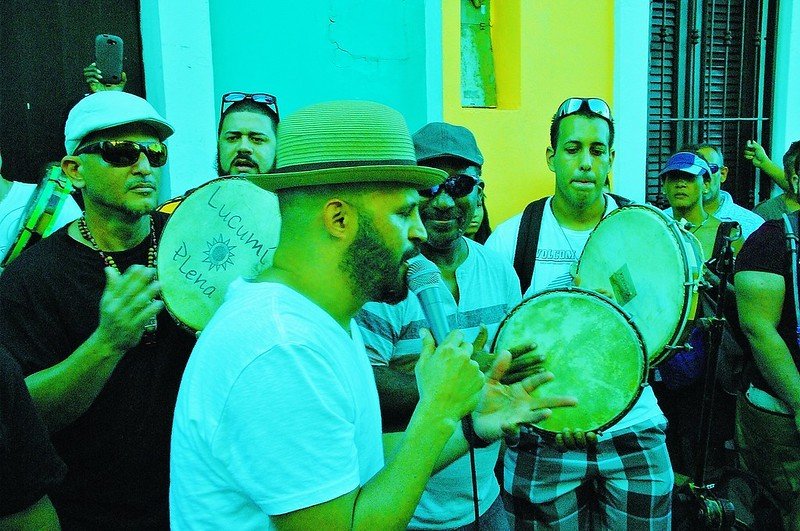
Panderos Drums Trio and Singer, photo by Angel Xavier Viera-Vargas. CC BY-ND 2.0, via Flickr.

Plena as Celebration and Ritual

People also play plena at larger, public celebrations and long-standing cultural festivals.

Above: Pleneros in the Street at Fiesta de la Calle San Sebastian 2018, photo courtesy of Ricardo Alcaraz. Right: Carnaval in Puerto Rico, by Anztowa, CC BY-2.0, via Flickr.

San Juan and Ponce

Map of Puerto Rico, courtesy of freeworldmaps.net
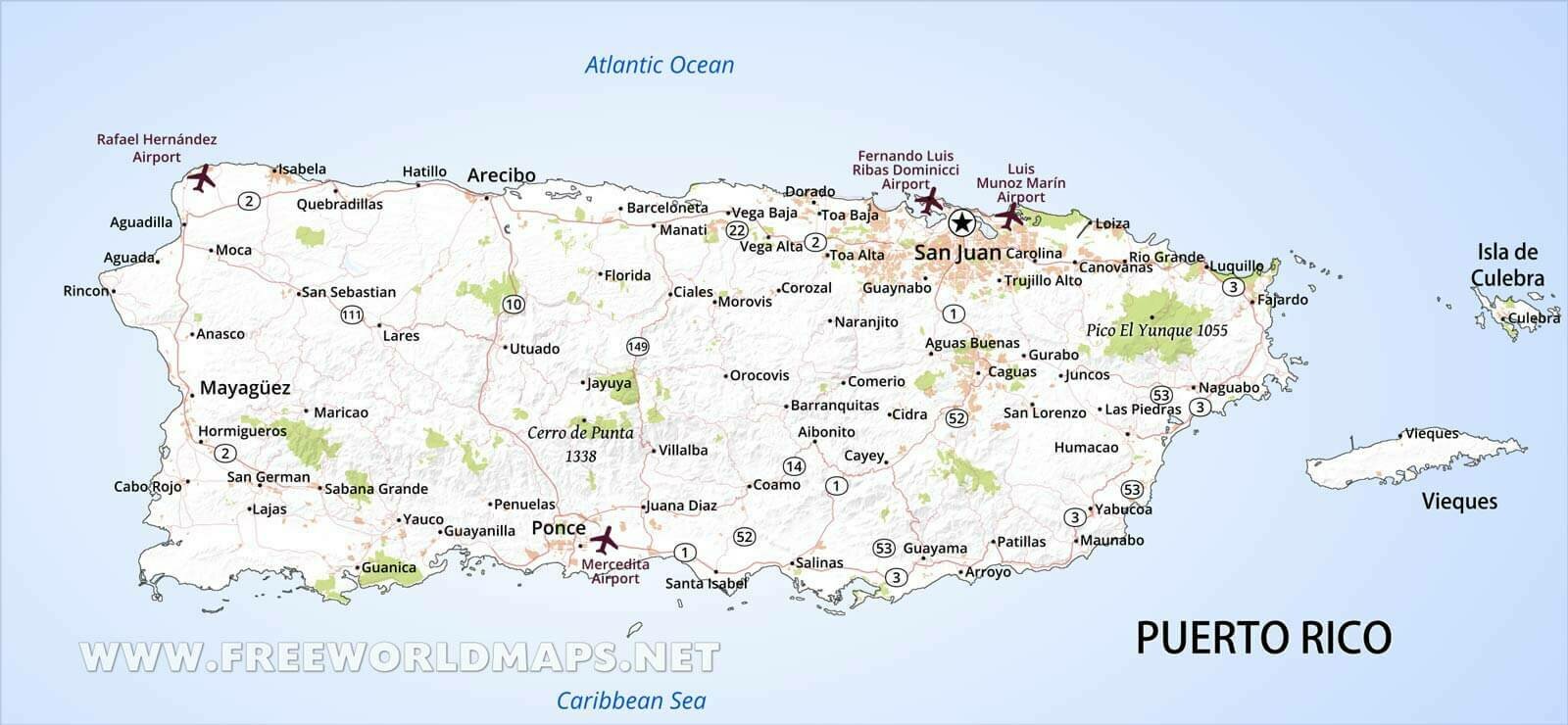


Plena as Communication

From the very beginning (early 1900s), people have used plena as a form of communication.
For this reason, plena is often called El Periodico Cantado
It was a way for working class people to discuss their struggles ... to tell their stories ... to share what was happening in their lives ... their "news".

("the sung newspaper”).
Central Guánica in Ensenada Puerto Rico, unknown artist, {PD-Art|PD-old-70}, via Wikimedia Commons.

Plena as Resilience
After the devastation caused by Hurricane María in 2017, community musicians, led by plena "great" Tito Matos, were heard singing these lyrics through neighborhood streets:
"Our plena, our song, our music, is stronger, our community is stronger than María."

Plena as “the people’s newspaper” remains a powerful idea today.
People use it to demonstrate resilience when times get tough.

Tito Matos: Puerto Rican Plena Drummer, photo by Dan Sheehy. Smithsonian Folkways Recordings.
Plena as Resistance

Plena has also been music of resistance.


Plena is at the heart of any march, protest and rally in Puerto Rico and its diaspora.
Pleneros During #Ricky Renuncia Protests in San Juan 2019. Photo courtesy of Ricardo Alcaraz.
"Que Bonita Bandera," performed by Pepe y Flora

Plena as a Cultural Symbol



Plena remains an important symbol of cultural and national pride, both in Puerto Rico and its diaspora.
Top row, from left: Pandereta, unknown artist; Puerto Rican Güiro, unknown maker; Avilés Vázquez Cuatro, by Rafael Avilés Vázquez. National Museum of American History.
Middle row, from left: Vejigante, by . Center for Folklife and Cultural Heritage. Pava, unknown maker; La Borinqueña, #1, by Edgardo Miranda-Rodriguez. National Museum of American History.
Bottom: Puerto Rican Flag at the Smithsonian Folklife Festival. Center for Folklife and Cultural Heritage.

Learning Checkpoint
-
Why is plena sometimes called "the people’s newspaper"?
-
What is cultural identity?
-
In what ways do people use plena to express their Puerto Rican cultural identity, both on the island and in the diaspora?

End of Path 3 and Lesson Hub 4: Where will you go next?


Continue to Lesson Hub 5:
Exploring Nueva Canción in Puerto Rico, Latin America and the Caribbean




Advance to the next History / Culture Path:
Nueva Canción: A New Song

Music of Puerto Rico - Lesson 5, Path 1
Lesson 4 Media Credits

Audio courtesy of
Smithsonian Folkways Recordings
Video courtesy of
Smithsonian Center for Folklife and Cultural Heritage
Smithsonian Folkways Recordings
Images courtesy of
Ricardo Alcaraz
Library of Congress
National Museum of American History
Smithsonian Folkways Recordings
Smithsonian Center for Folklife and Cultural Heritage
University of Texas at Austin, PCLP Map Collection
Freeworldmaps.net
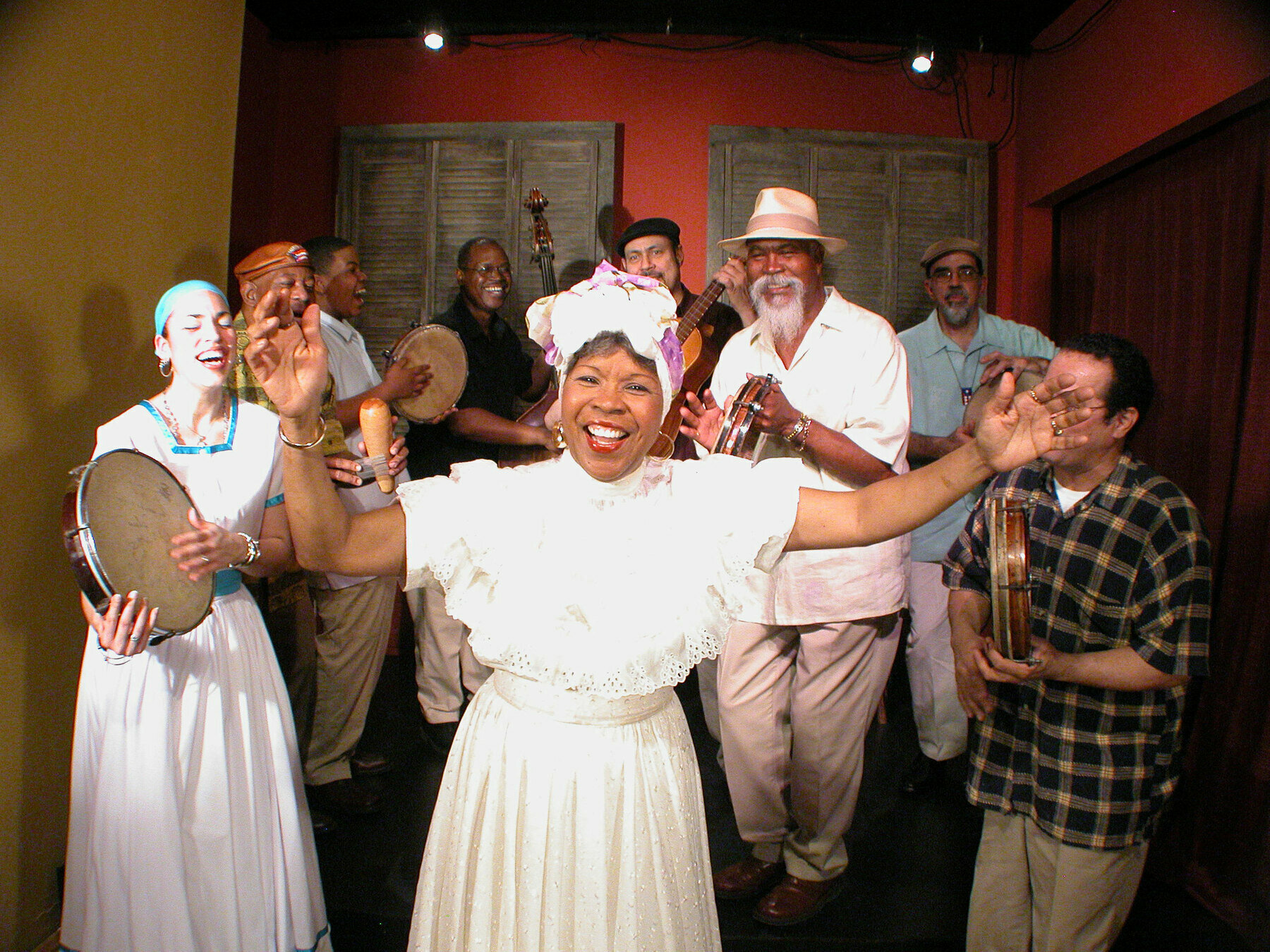
© 2024 Smithsonian Institution. Personal, educational, and non-commercial uses allowed; commercial rights reserved. See Smithsonian terms of use for more information.
This Pathway received federal support from the Latino Initiatives Pool, administered by the National Museum of the American Latino. It also received in-kind, collaborative support from the Society for Ethnomusicology, the National Association for Music Education, and the Smithsonian Folkways Education Committee.
For full bibliography and media credits, see Lesson 4 landing page.

